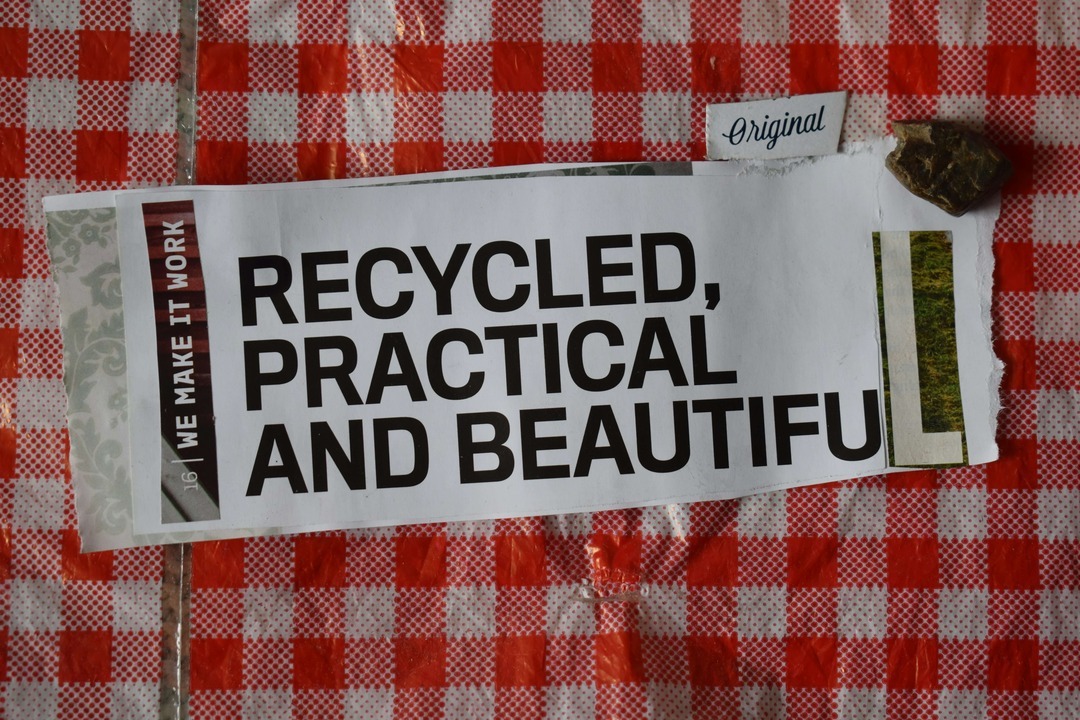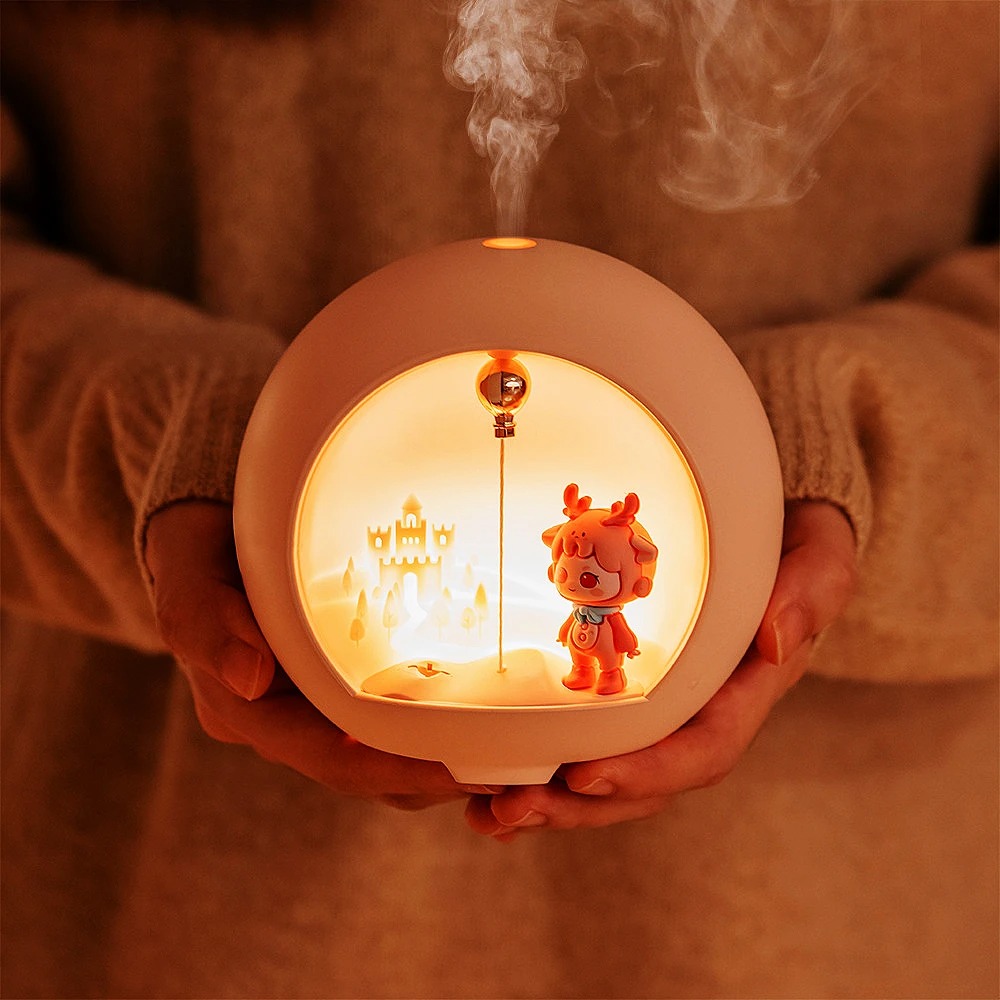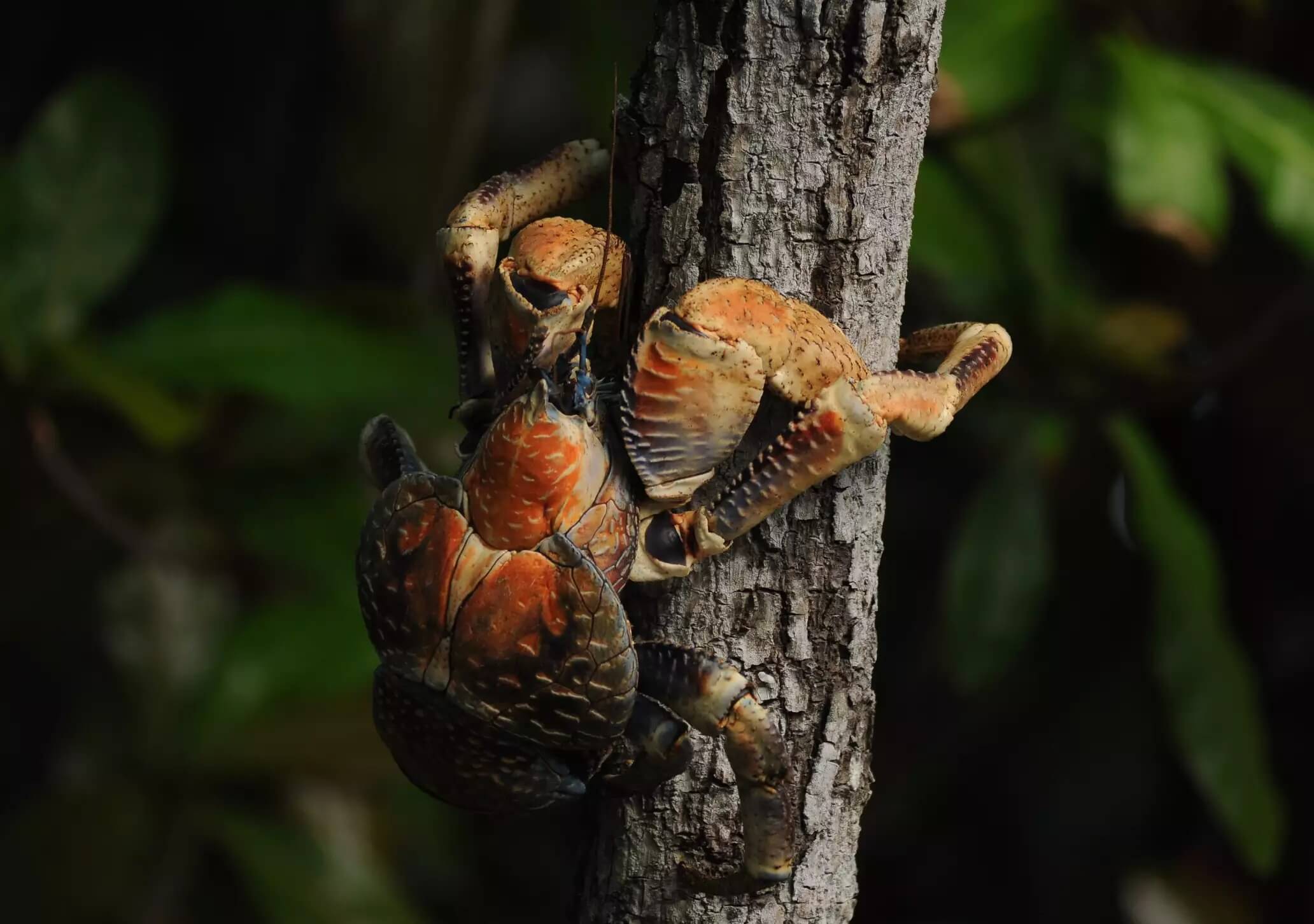
Coconut crab populations are only found in islands across the Indian Ocean and the central Pacific Ocean, with most habitats located near the shore. Though they are related to hermit crabs, these truly enormous crustaceans live exclusively on land and have zero ability to swim once they reach maturity.
Readers might recognize viral photos of coconut crabs perched menacingly on top of trees or latched onto a trash can (though the latter may have been a bit misleading), but these extraordinary creatures have much more to show for than just their size.
Learn about the legends surrounding these animals, whether or not they pose a danger to humans, and more interesting details with these 17 captivating coconut crab facts.
1. Coconut Crabs Are the Largest Land Crustacean
The Japanese spider crab is the largest crustacean in the world, but since they are strictly marine-dwellers, the coconut crab claims the title of the largest crab found on land. They average over 5 pounds in weight (though some can push up to 9 pounds) and have a leg span of 36 inches.
2. Their Shells Are Red or Blue in Color
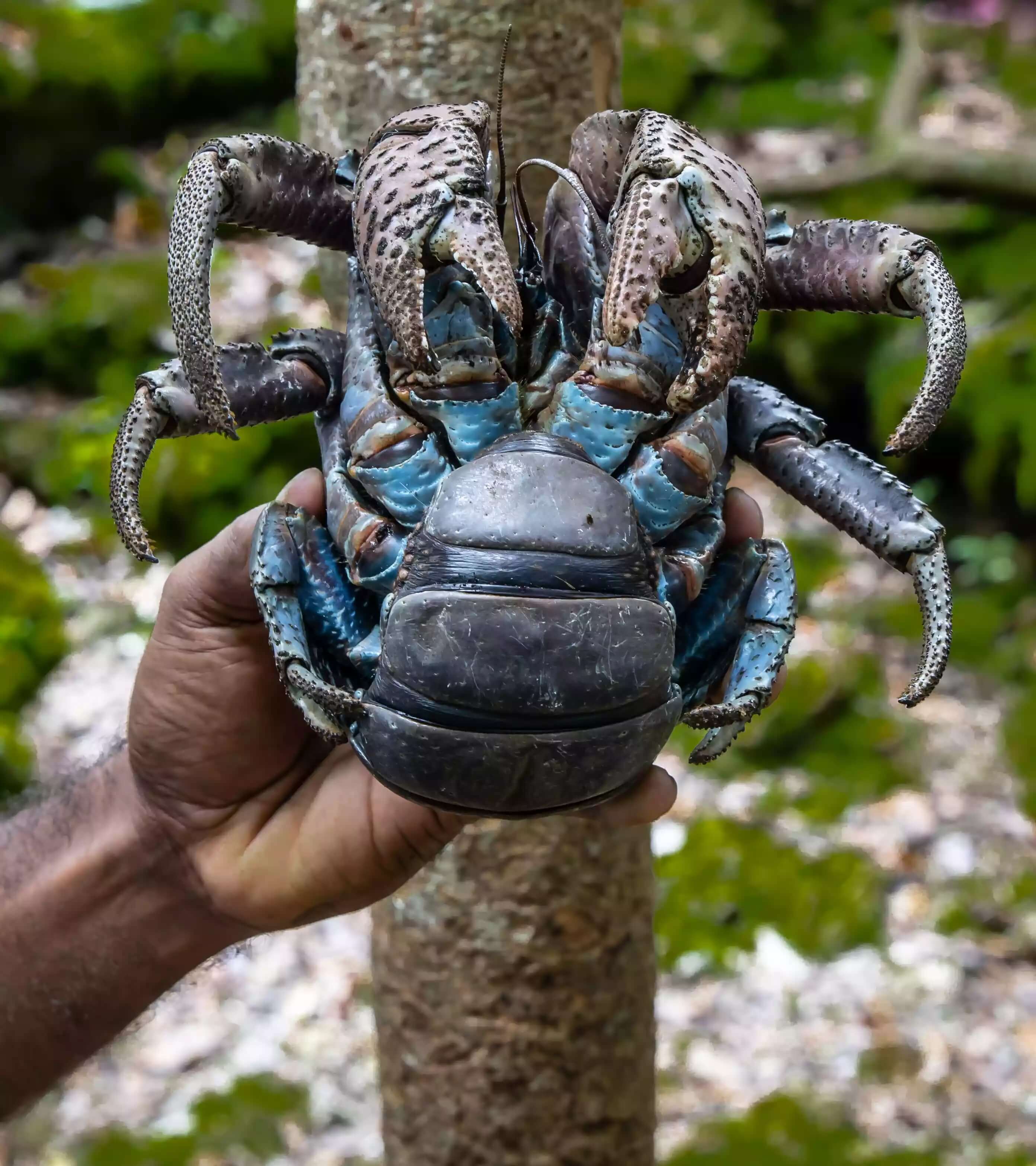
Scientists still aren’t sure what influences a coconut crab’s color, which ranges from bright red to turquoise blue. Often, the color is just accented on certain parts of the crab’s brown body, but some are much more striking. Studies have shown that color isn’t sex or size-dependent, nor is it associated with pinch force strength. What’s more, shell color is unlikely to reflect individual behavioral disposition or environmental factors, either. While further research is needed to better understand this phenomenon, one explanation could point towards assortative mating or sexual selection.
3. They May Be the Reason Amelia Earhart’s Body Was Never Found
One of the many theories pertaining to the disappearance of famous aviator Amelia Earhart is that the pilot crash-landed on an island in the Republic of Kiribati in the central Pacific Ocean. Specifically, experts believe that the tragedy took place on Nikumaroro Island, which is historically abundant with coconut crabs. The International Group for Historic Aircraft Recovery has hypothesized that Earhart made an emergency landing on the island and eventually died, but her body was never found because it was dragged away by massive coconut crabs. The organization has even attempted to test the theory on several occasions.
4. They Eat Coconuts
Unsurprisingly, coconuts make up a good portion of the coconut crab’s diet. Thanks to their curved legs and inward grip, they can climb palm trees and use their strong claws to crack into coconuts with ease. That isn’t all they eat, however, as they’ve also been observed preying on animals such as rats, migratory seabirds, and even on each other. In the Chagos Archipelago, the Earth’s largest coral atoll, coconut crabs were seen organizing a direct attack by sneaking up and catching an adult red-footed booby under the cover of night.
5. They’re a Type of Hermit Crab
Although the coconut crab is the only species that makes up the genus Birgus, it is related to terrestrial hermit crabs, and they share a signature characteristic. When they’re born, coconut crabs have a thin, soft shell, which they like to protect with an empty seashell until it strengthens. Needless to say, they grow out of their seashells pretty quickly, and instead grow to rely on their tough exoskeleton for protection instead.
6. Coconut Crabs Have a Strong Sense of Smell
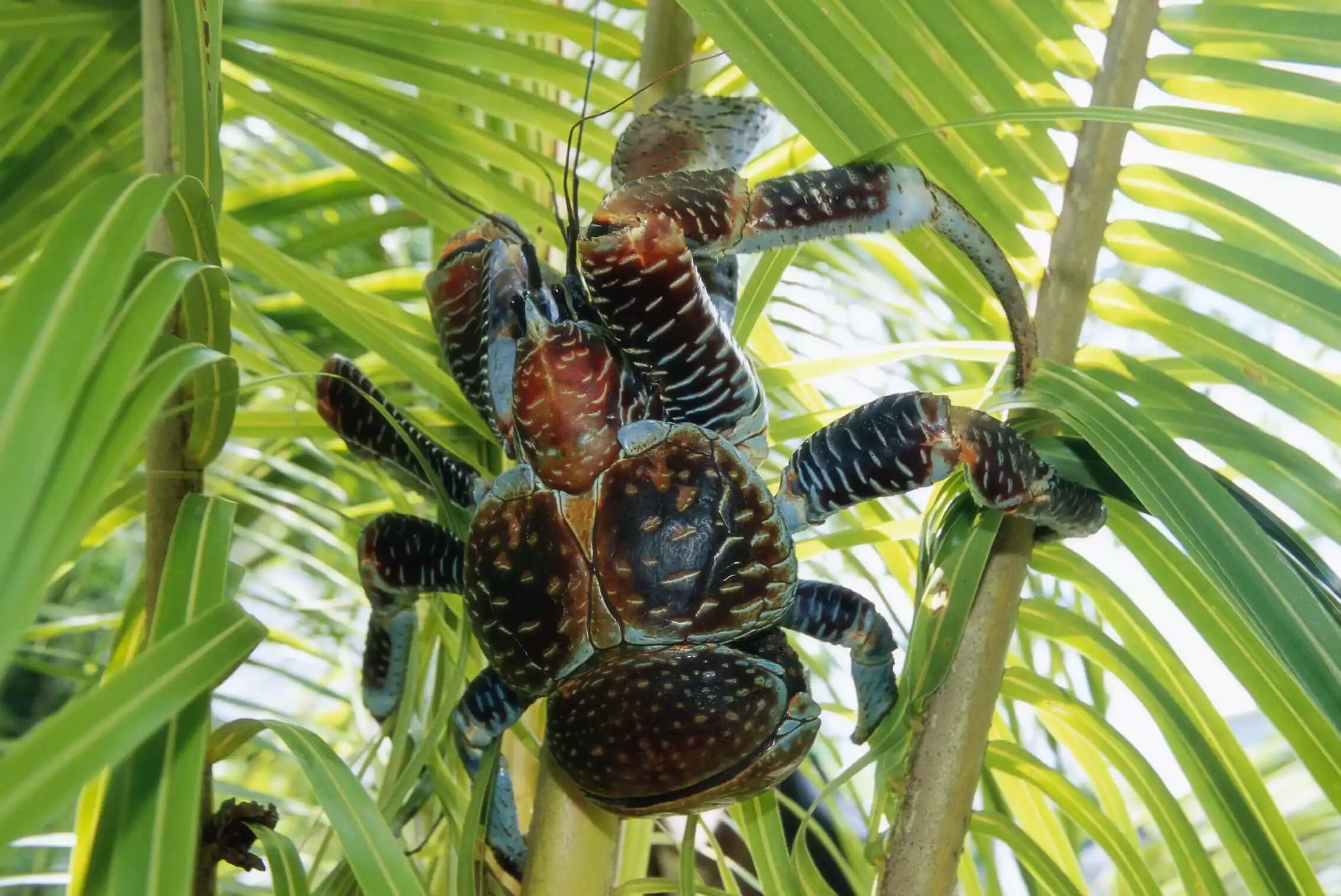
Since they do most of their hunting at night, their sensitivity to smell is vital for coconut crab survival. As they forage in the dark, the smell of fruit, nuts, or small animals attracts the crabs to their prey. As much as 40% of a coconut crab’s brain is completely dedicated to smell, while their visual and sensory skills are similar to those of marine crustaceans — despite the fact that coconut crabs live exclusively on land.
7. They Also Go by the Name ‘Robber Crabs’
These terrestrial crustaceans aren’t just known for their coconut-breaking abilities, but for their thieving skills as well. All the way back in 1906, English naturalist Henry N. Ridley wrote about coconut crabs stealing items like saucepans, bottles, and even a boot from his tent. Later in 1976, another researcher noticed a coconut crab toting a bottle of whiskey behind it. Experts believe that the reason why the crabs steal such specific items has to do with the coconut crab’s acute scent organs.
8. Their Claws Have the Strongest Pinch of Any Crustacean
It takes a lot of effort to crack a coconut, unless you’re a coconut crab, of course. Their claws are strong enough to lift objects as heavy as 61 pounds, while their grip is about 10 times stronger than that of humans. A 9-pound coconut crab has a crushing force of 3,300 newtons, significantly higher than other crustaceans like lobsters, who only have claw strengths of 150 newtons. Not only does this exceed the grip strength of humans and lobsters, but also the bite force of most terrestrial predators.
9. Coconut Crabs Were First Described by Charles Darwin
Experts believe that these amazing animals were first described by none other than legendary biologist Charles Darwin. He wrote about coconut crabs after encountering them during his Beagle voyage through the Indian Ocean, describing them as “a monstrous size,” and marveling at the ease in which the great crab cracked into a hard-shelled coconut covered with husk.
10. They Prefer to Live Alone
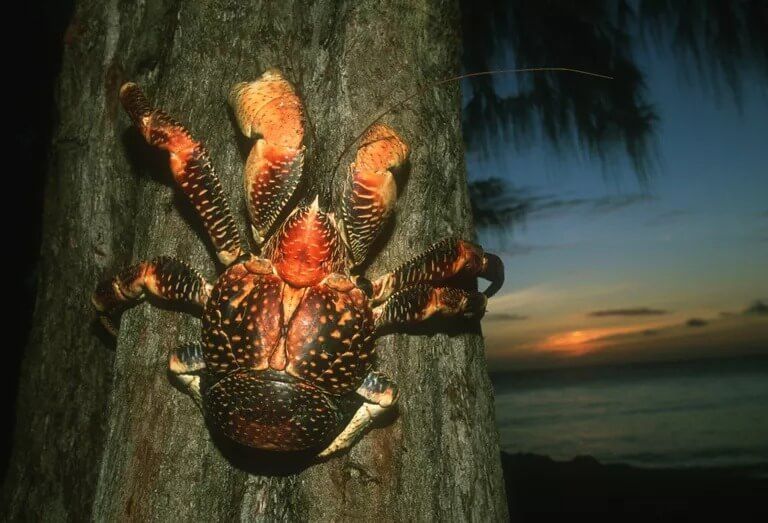
Coconut crabs are primarily nocturnal, preferring to live alone in rock crevices or sandy burrows that they dig themselves. Burying their bodies in the loose soil or sand helps the animals maintain moisture, especially helpful in the tropical climates where they live. Generally, adults only leave their hideouts in search of food or during mating season.
11. Coconut Crabs Are Edible
Due to their nocturnal nature and strong claws, hunting coconut crabs is a tricky endeavor. On the various islands where coconut crabs make their habitats, they are killed and served up as a delicacy. Their behemoth size means that they provide a lot of crab meat, so some local communities have come to rely on them as a food source or to sell. Unfortunately, unsustainable hunting has had a major negative impact on the Vulnerable species in certain areas.
12. Humans Can Be Poisoned By Eating Coconut Crab
While their flesh isn’t itself poisonous, there have been several circumstances reported where they’ve become so due to their diets. Eating sea mango (a coastal tree that contains extremely strong poison), for example, can cause a coconut crab to become toxic when consumed by humans.
13. They Can Be Dangerous
Seeing as coconut crabs have pincers that are some of the most powerful in the animal kingdom, they can be dangerous. That being said, they are generally afraid of humans and would rather keep their distance. Attacks on people are rare, but like most crabs, they can display aggressive behavior if they feel threatened.
14. Their Biggest Predators Are Humans
Located underground on tropical islands, coconut crab habitats tend to be isolated, so they don’t have many predators. Incidentally, the biggest threat faced by a coconut crab comes from overharvesting by humans, but also from habitat loss caused by rising sea levels. There are some hunting regulations across the Pacific islands and certain governments have set limits on how many crabs can be caught in a specific area.
15. Babies Are Born at Sea but Can Drown as Adults
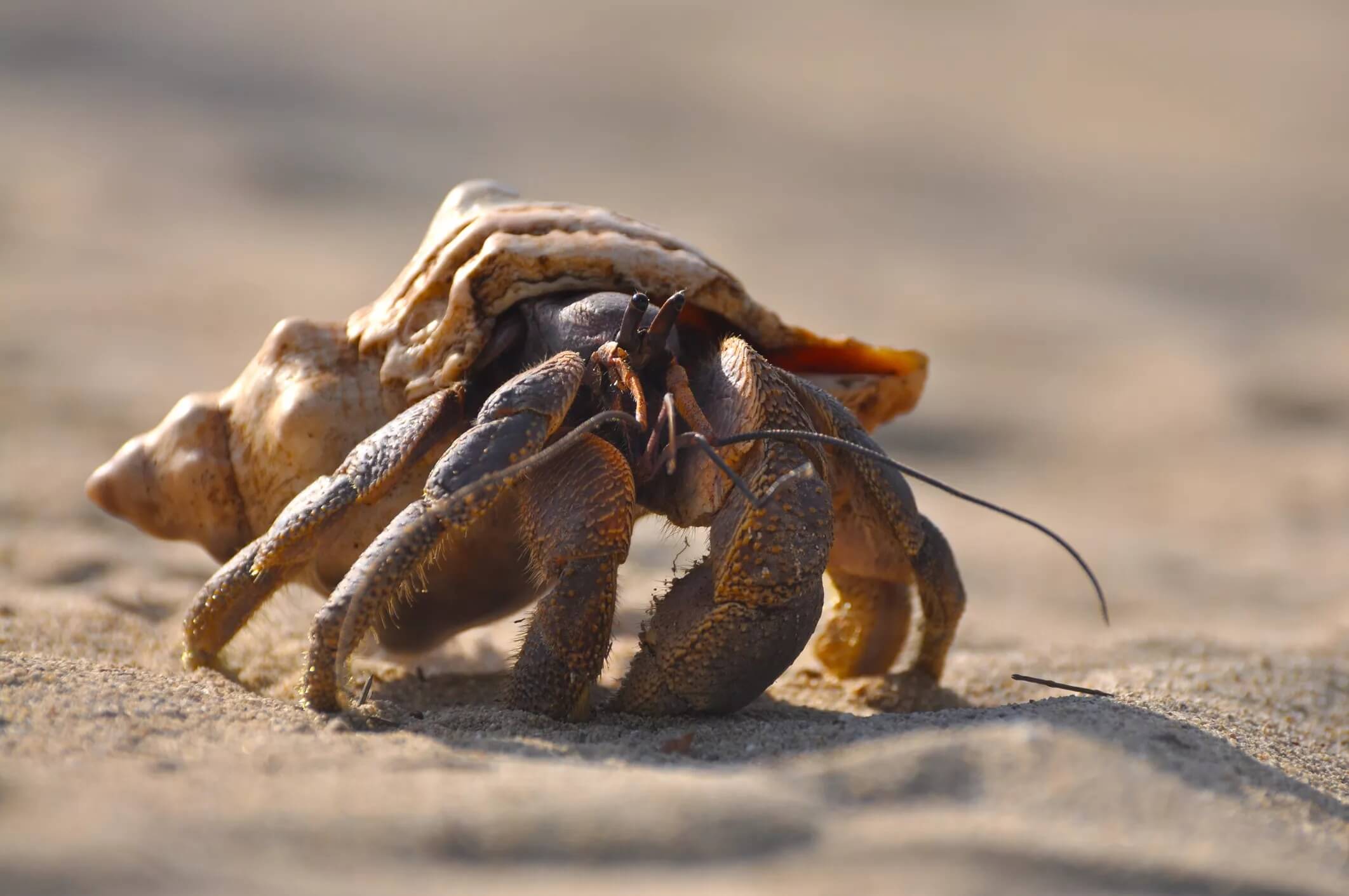
Baby coconut crabs have a long journey from birth. Female coconut crabs release their eggs straight into the ocean and once they hatch, the larvae are dependent on floating driftwood or coconut husks to keep them safe for four to six weeks. They then sink to the seafloor and find a seashell to protect themselves from predators before migrating towards the shore. Babies spend another four weeks surfing the tide until they grow large enough to make their way onto land. Once they reach adulthood, coconut crabs lose their ability to swim and will drown if they end up back in the water.
16. Coconut Crabs Can Live for 60 Years
Coconut crabs reach sexual maturity at around 5 years old, but after that they are extremely slow-growing. Females give birth just once a year, and their offspring face many dangers from predators while they’re young and vulnerable. Although they do live for a relatively long time, anywhere from 40 to 60 years, their slow growth rate makes it very easy to overharvest coconut crabs.
17. Their Populations Are Decreasing
The IUCN Red List of Endangered Species considers coconut crabs a Vulnerable species. The organization hasn’t been able to narrow down exact population numbers, but there is evidence that coconut crabs have declined by at least 30% over the past 60 years, and the trend is expected to continue for at least another 20 years. The most abundant coconut crab populations live in places with either a low or nonexistent human population.
